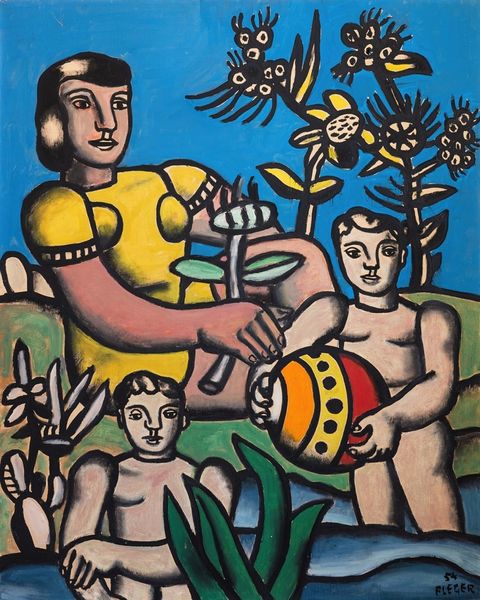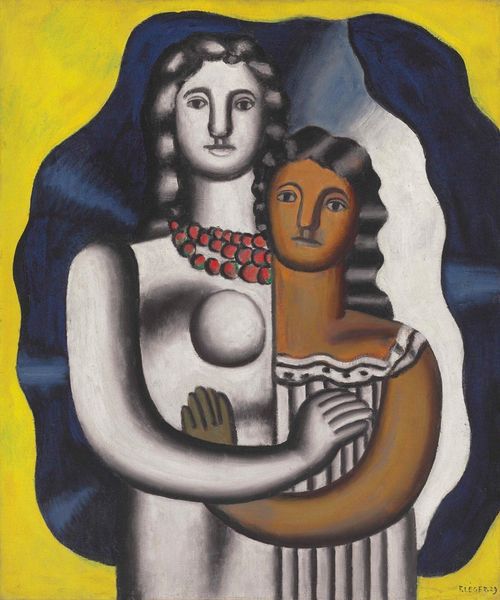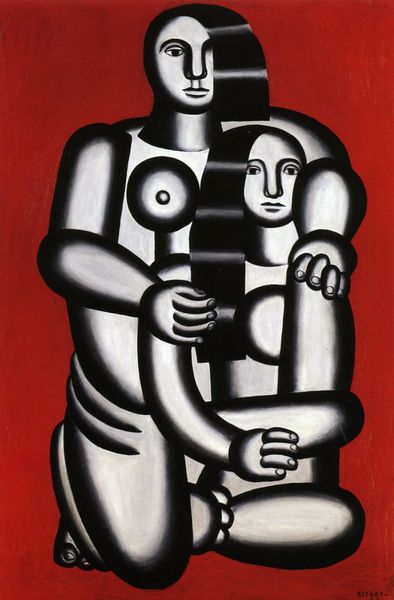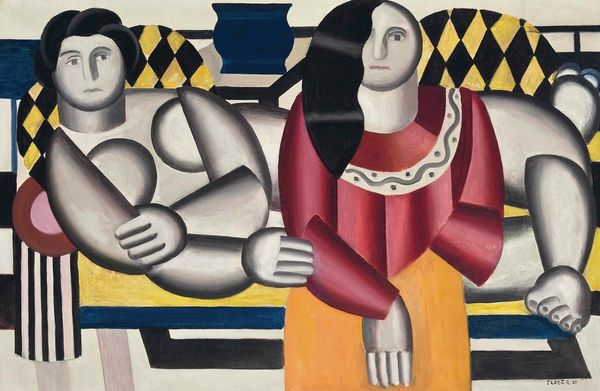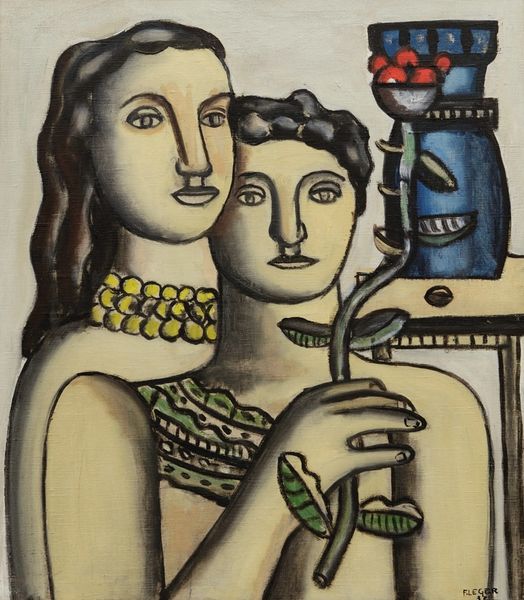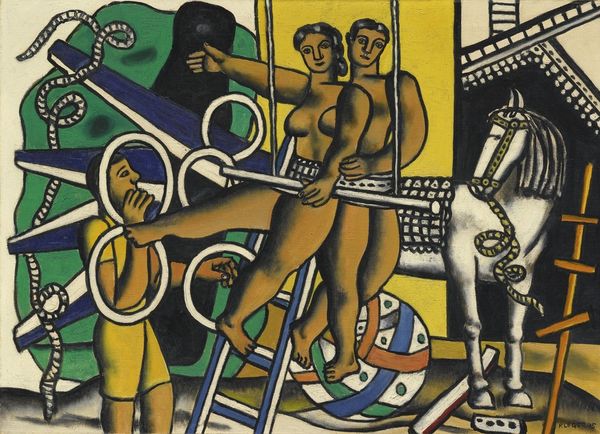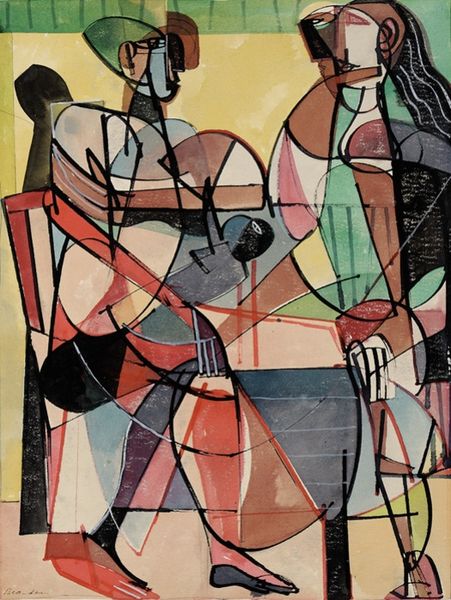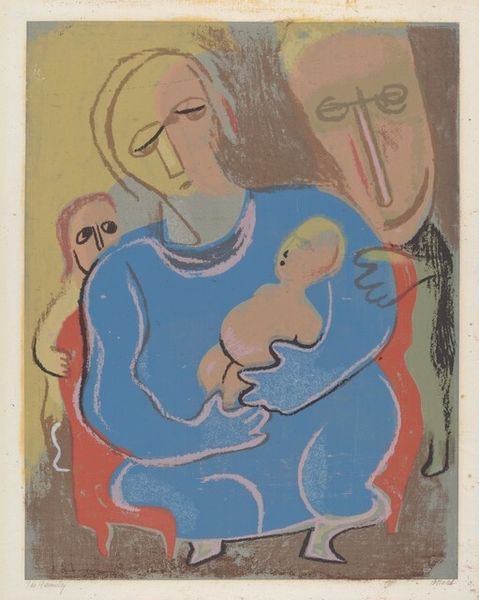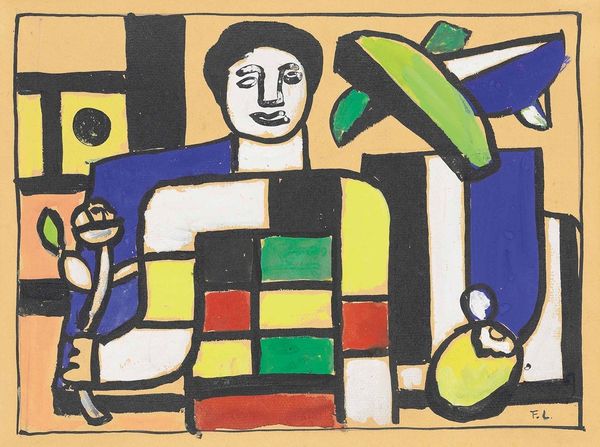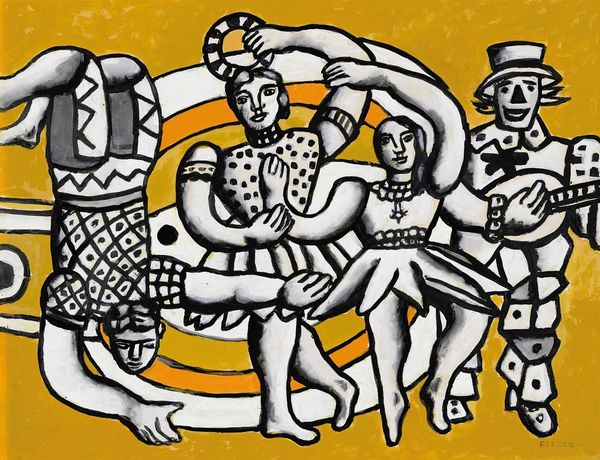
painting, oil-paint
#
portrait
#
cubism
#
painting
#
oil-paint
#
figuration
#
oil painting
#
portrait art
#
modernism
Copyright: Modern Artists: Artvee
Editor: This is Fernand Léger’s "Les deux soeurs", or "The Two Sisters", painted in 1929. The figures are rendered in oil paint, with striking cylindrical forms. It's so…static, but the texture in their clothing makes me wonder, what do you make of the relationship between the forms and the materials used? Curator: For Léger, the materiality of paint was crucial. See how he treats the figures almost like industrial products, reducing them to simplified forms? That speaks volumes about the social context of the 1920s, where the rise of factories and mass production heavily influenced artistic vision. Editor: So, the almost mechanical depiction of the figures is a commentary on industrialization's effect on humanity? Curator: Exactly. Look at the smooth, almost metallic skin tones contrasting with the textured patterns in their dresses. These aren’t individualized portraits in the traditional sense; they’re types, generalized and stripped of emotional specificity, much like cogs in a machine. Even the necklaces and small painting on the wall contribute to the theme. The necklaces resemble beads on a chain while the artwork on the wall looks machine-made, or generic. How do those observations change your perception of the artwork? Editor: I hadn’t considered that before! I guess I saw the contrasting textures but didn’t connect that to this mass production you speak of. The choice to use industrial aesthetics also brings focus to what gets consumed by it, the labor class... Thank you! Curator: It all hinges on understanding the material conditions of the time. It challenges the hierarchy separating the manufactured world and 'fine art.' Food for thought, isn't it?
Comments
No comments
Be the first to comment and join the conversation on the ultimate creative platform.
